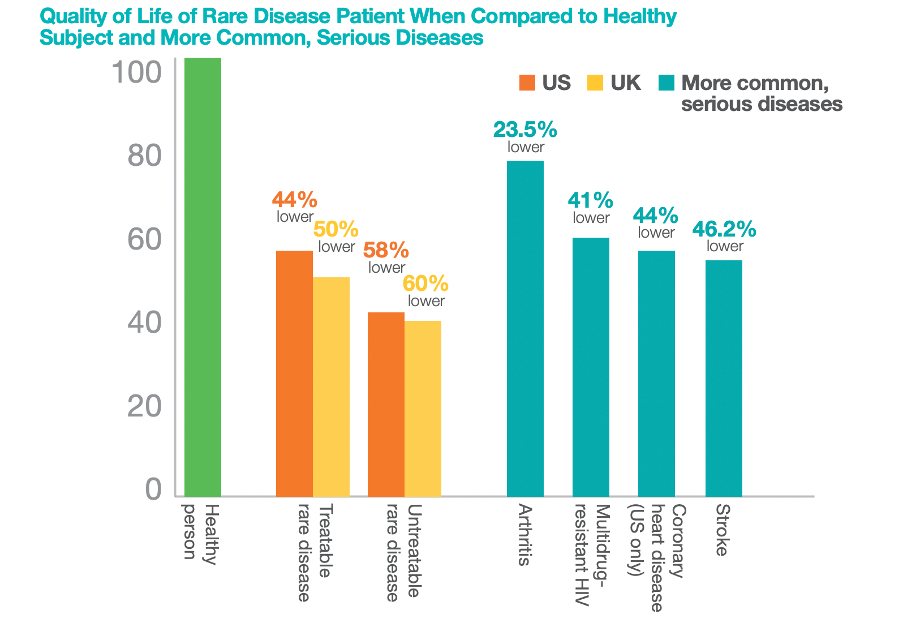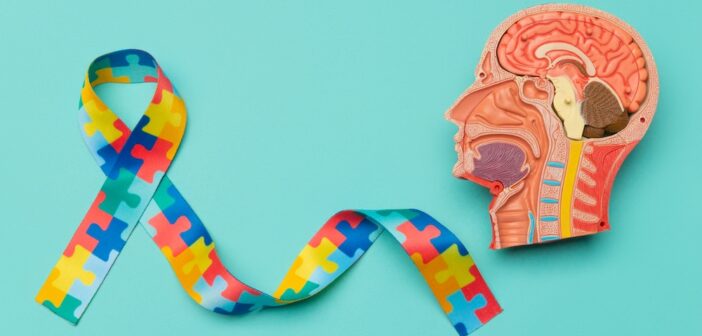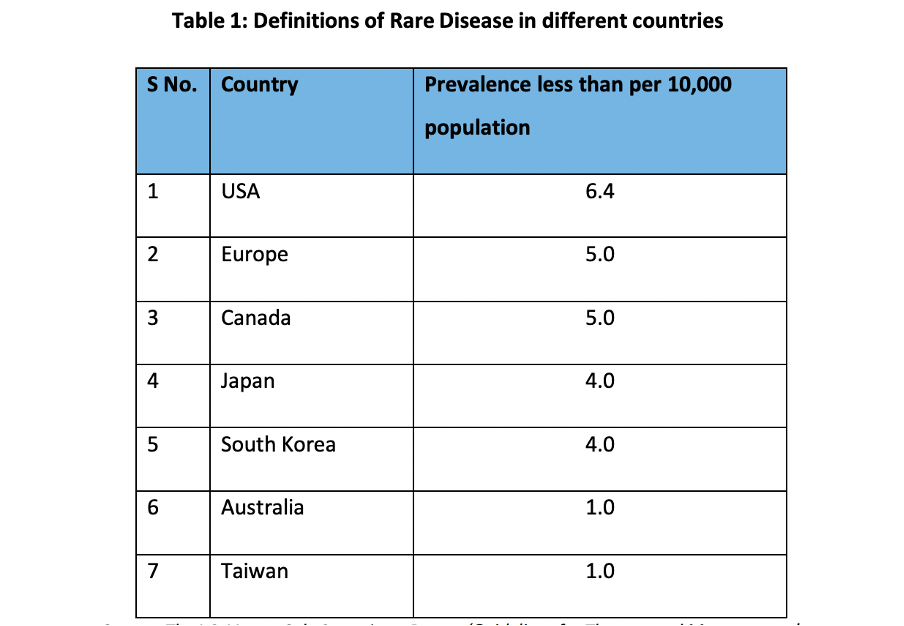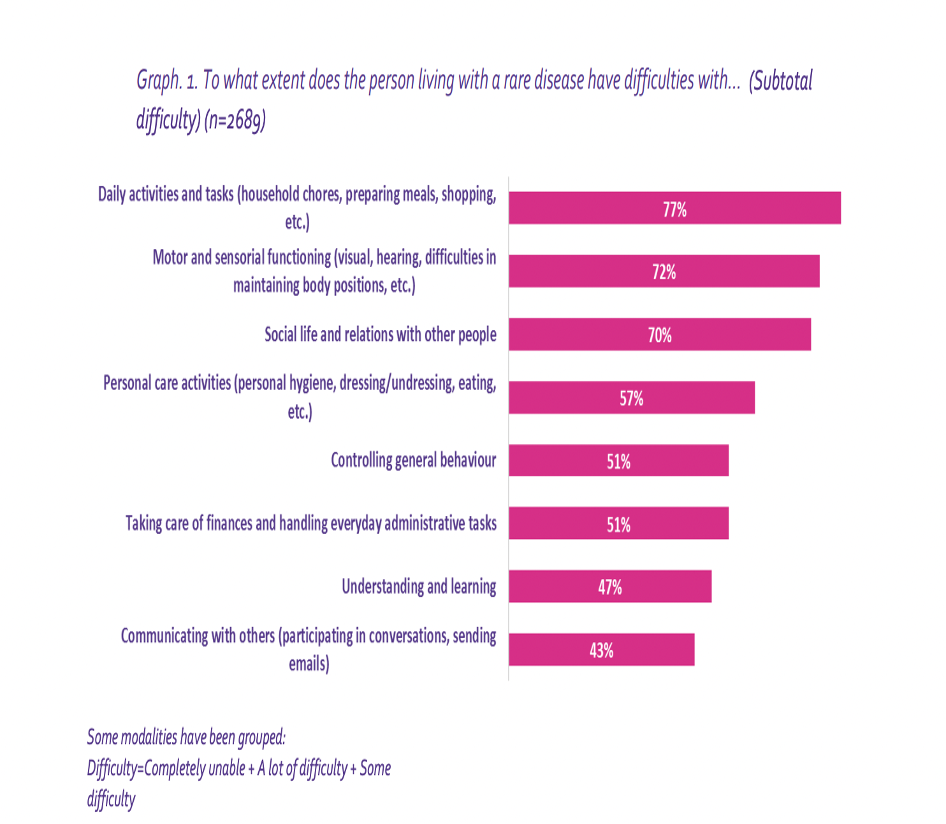As per India’s National Policy for Rare Diseases (NPRD), there are between 7000-8000 such rare diseases in the world with less than 5% having therapies for treatment and 95 with no approved treatment. Here is a review.
Today, the world is confronted with the new diseases each year. For instance, according to an estimate, an average of 3 human pathogens are discovered each year since 1980. According to another study, about 30 infectious diseases have emerged over the last 30 years which threaten the health of millions of people. Multiple factors are attributed to the rise of these diseases, including climate change.
Coupled with this reality, the world is also confronted with the spread and rise of rare diseases. As per India’s National Policy for Rare Diseases (NPRD), there are between 7000-8000 such rare diseases in the world with less than 5% having therapies for treatment and 95 with no approved treatment.
In this story, we examine the global and national situation of rare diseases, their prevalence, and the issues involved in diagnosing and treating these diseases.
India does not have a definition of ‘rare diseases’
Though the NPRD was formulated in 2017, it was promulgated in the year 2021, after the wake of COVID-19. As per the policy document, different countries have different definitions for ‘rare diseases’, depending on factors such as disease prevalence, severity, treatment availability, etc.
The World Health Organization (WHO) defines rare disease as a debilitating lifelong disease or disorder with a prevalence in 1 or fewer persons per 1000 population. In the US, rare diseases are defined as a disease or condition that affects 6.4 persons per 10,000 people. The prevalence-based definitions of rare diseases used in various countries are as follows:
The NPRD states that disease prevalence alone may not be an accurate basis for defining rare diseases, since it does not consider the changes in population over time. There have been suggestions to formulate the definition based on factors such as:
- Location: A disease which is uncommon in one country may be quite common in other parts of the world.
- Levels of rarity: Some diseases may be much rarer than other diseases which are also uncommon
- Study-ability: Whether the prevalence of a disease lends itself to clinical trials and studies
Highlighting these factors, the NPRD notes that there is a need for further research to better understand and examine the scope of arriving at a definition best suited to the conditions in India. This shall be done as soon as enough data is available.
63 diseases in India are identified as rare diseases
The NPRD states till such time the definition for rare diseases is arrived at, the following groups of disorders shall be construed as rare diseases.
Group 1: Disorders amenable to one-time curative treatment:
- Disorders amenable to treatment with Hematopoietic Stem Cell Transplantation (HSCT)
- Disorders amenable to organ transplantation
Group 2: Diseases requiring long-term/lifelong treatment having a relatively lower costs of treatment and benefits have been documented in the literature and annual or more frequent surveillance is required
- Disorders managed with special dietary formulae or Food for special medical purposes (FSMP)
- Disorders that are amenable to other forms of therapy (hormone/ specific drugs)
Group 3: Diseases for which definitive treatment is available, but challenges are to make optimal patient selection for benefit, very high cost and lifelong therapy.
- Several disorders for which sufficient evidence for good long-term outcomes exists
- Several disorders for which the cost of treatment is very high and either long-term follow-up literature is awaited or has been done on a small number of patients
The NPRD states that this above categorization is not exhaustive and is subject to periodical review. The recent Lok Sabha reply dated 9 August 2024 listed 63 diseases which are recognized as ‘rare diseases’ under the NPRD.
Multiple challenges to diagnose and treat rare diseases
Around the world, about 350 million people are estimated to be living with rare diseases. The NPRD states that the field of rare diseases is complex and constantly evolving, with their changing landscape and new conditions regularly identified. While progress has been made in a few cases, the field still remains nascent and underdeveloped. Historically, doctors, researchers, and policymakers lacked awareness, and research or public health policies were minimal until recently.
However, there are multiple challenges in diagnosing, treating, and curing rare diseases. These challenges as highlighted in the NPRD as summarized below:
Diagnosis
Early diagnosis of rare diseases is challenging due to low awareness among primary care physicians and inadequate diagnostic facilities. Traditional genetic tests cover limited diseases, often requiring physicians to make educated guesses. Negative results lead to further testing with next-generation sequencing or chromosomal microarray, which are costly and time-consuming. Many doctors lack training to diagnose rare diseases correctly, contributing to significant diagnostic delays.
This is illustrated by the 2013 survey conducted by Shire in the United States of America (USA) and the United Kingdom (UK). They found that in the USA, diagnosis of rare diseases takes an average of 7.6 years, and in the UK, 5.6 years. 92% and 88% of the physicians surveyed in the USA and UK, respectively, have said it is more difficult to address the needs of a rare disease patient in a typical office visit. Other issues highlighting the lack of resources and information to address rare diseases by physicians are summarized in the following chart:
Research and Development
Research and development for rare diseases face challenges due to limited knowledge of their pathophysiology and natural history. Small patient pools lead to inadequate clinical experience, resulting in incomplete understanding. Since these diseases are often chronic, long-term follow-up is crucial, but published data on treatment outcomes is scarce.
Prohibitive Cost of Treatment
The number of persons suffering from rare diseases is small. They are called “orphan diseases” since they lack a significant market for drug manufacturers. The high cost of orphan drugs is attributed to research and development expenses. Few pharmaceutical companies globally produce these drugs, and India has no domestic manufacturers except for Food for Special Medical Purposes (FSMP) for small molecule inborn errors of metabolism. Due to the high costs, the government cannot provide free treatment. For a 10 kg child, annual treatment costs range from ₹10 lakh to over ₹1 crore, increasing with age and weight.
Unavailability of Treatment
Access to medicines is crucial for reducing morbidity and mortality in rare diseases. However, most rare diseases lack effective treatments. Of the 7,000–8,000 known rare diseases, less than 5% have available therapies, and 95% have no approved treatments. Fewer than 1 in 10 patients receive disease-specific care.
Studies have indicated deplorable state of lives of those affected by rare diseases
The lack of proper care and treatment for those affected with rare diseases has undoubtedly affected their life in several ways, especially in the following ways:
The quality of Life of rare disease victims is 45% lower than heart disease victims
The quality of life of those living with rare diseases is very low when compared with normal healthy persons, and even with those who are affected by common serious diseases. The Shire 2013 survey examined this phenomenon and found the following results:

The quality of life of those affected with rare diseases is about 45% lower than those affected with heart diseases. Another 2017 survey on the European population suffering from rare diseases examined the quality of their life and found the results as follows:
Depression, Anxiety, and Isolation among the emotional impacts faced by victims of rare diseases
The Shire survey highlighted the emotional toll of rare diseases, revealing that untreatable conditions have a greater psychological impact than treatable ones. However, both categories show high levels of depression, anxiety, and social isolation.
India doesn’t have data on the number of patients suffering from rare diseases
The NPRD states India lacks reliable data on the prevalence of rare diseases, with most diagnoses occurring at tertiary hospitals. The NPRD further states that the lack of proper data limits understanding, policy formulation, and accurate estimates of morbidity, mortality, and economic burden. Without proper epidemiological studies, the true impact remains unknown. The absence of data also hinders defining rare diseases and assessing healthcare needs.
As per the parliamentary reply dated 9 August 2024, twelve Centres of Excellence (CoEs) have been established in premier government tertiary hospitals, providing facilities for the diagnosis, prevention, and treatment of rare diseases. Under the National Policy for Rare Diseases (NPRD), the government offers financial assistance of up to ₹50 lakh for eligible patients, benefiting approximately 1,118 individuals so far.
While these initiatives are commendable, India lags behind countries like the USA, where a formal definition of rare diseases exists, and affected individuals are systematically identified. In contrast, the NPRD acknowledges the absence of an official definition, a comprehensive patient count, and other critical data.





